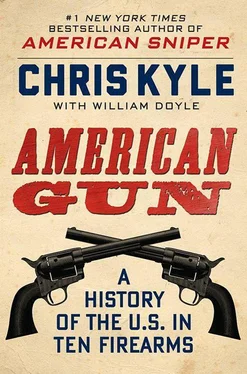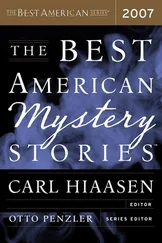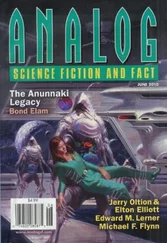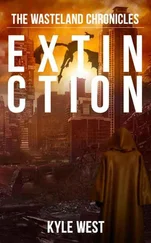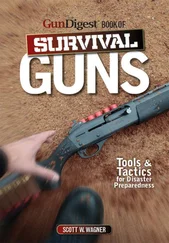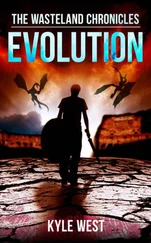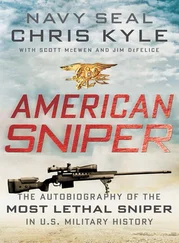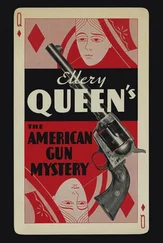The British were, Morgan wrote a few days later, “running at us as if they intended to eat us up.”
Morgan had laid his pieces on the battlefield like a chess master. He deployed his troops in three main formations—the first line made up of riflemen-sharpshooters, the second line of militia armed with rifles and muskets, then musket-armed regulars. They created what you could call “a defense-in-depth on high ground,” or a “reverse slope defensive strategy.” The idea was to goad Tarleton into a premature victory rush up a broadly sloping hill, where Morgan would snap the trap shut.
Morgan put his long-rifle snipers at the tip of the spear. Some one hundred and fifty sharpshooting riflemen from Georgia and the Carolinas scattered in swamps and behind trees, guerrilla-style. Following Morgan’s plan, they opened fire individually at the advancing British from close range, with special attention given to the officers. Then, having blooded the enemy, they broke off and ran uphill toward the American lines, re-forming to commence long-range fire. With their slow reloading time and lack of bayonets, these soldiers had a special incentive to try to avoid close contact with the British regulars toting bayonet-tipped muskets.
The American second line, theoretically the riskiest bunch and the most likely to break, consisted of roughly 1,000 North and South Carolina militia troops. They opened fire, as Morgan ordered, inflicting major damage on the royal troops who were less than forty yards away. Most of the Americans couldn’t manage to pull off the three shots Morgan hoped for, and some could only manage one, but no matter. As a group, they turned their backs to the charging British and hightailed up the hill, simulating a panicked retreat.
As intended, the sight of a broadly collapsing American line cheered Tarleton’s remaining troops, who charged forward uphill—bloodied, weakened, and disorganized, not realizing that the third and final line was made up of five hundred battle-hardened regular American troops. These were General Dan Morgan’s best men, the Maryland, Delaware, and Virginia continentals. These seasoned vets acted as a screen for the fleeing militia troops, who ran behind and through them, then about-faced and started re-forming into a new unseen fourth line preparing to face the British. Meanwhile a reserve American cavalry force of light dragoons under Colonel William Washington (second cousin of George) stood ready to pounce at the right moment.
The American third line opened fire in good order, leading one militia man to report, “When the regulars fired, it seemed like one sheet of flame from right to left. Oh! It was beautiful.”
But suddenly, disaster appeared for the Americans.
In the chaos of combat, an order by American Lieutenant Colonel John Howard to his Virginia regulars to adjust their line to face the onrushing Scottish Highlanders of the 71st Regiment was misinterpreted as an order to retreat. Instead of wheeling to form a new line perpendicular to their unit, portions of the line withdrew, triggering a domino effect, and most of the American regulars started withdrawing. Colonel Howard later explained the catastrophe-in-progress: “Seeing my right flank was exposed to the enemy, I attempted to change the front of Wallace’s company. In doing this, some confusion ensued, and first a part and then the whole of the company commenced a retreat. The officers along the line seeing this and supposing that orders had been given for a retreat, faced their men about and moved off.”
To the British, it looked like yet another collapse of the American lines was under way, and they rushed forward, now in badly disconnected fragments.
This was not, however, part of the American plan, and it threatened to doom them on the battlefield.
But Morgan and two of his officers reacted instantly to the sudden crisis and created a new plan on the spot: stop the retreat, spin the whole line of five hundred Virginia regulars around, and blast the British from inside fifteen yards away, shooting muskets virtually from hip level.
“They are coming on like a mob!” declared cavalry leader Colonel Washington, sensing an opportunity to strike the British with a final blow. “Give them a fire,” he called to Lieutenant Colonel Howard of the Virginia militia, “and I will charge them!”
Howard yelled for his troops to stop and about-face. They did exactly that. “In a minute we had a perfect line,” recalled Howard. “The enemy were now very near us. Our men commenced a very destructive fire, which they little expected, and a few rounds occasioned great disorder in the ranks. While in this confusion, I ordered a charge with the bayonet, which order was obeyed with great alacrity.” As Dan Morgan later explained, “We retired in good Order about 50 Paces, formed, advanced on the Enemy & gave them a fortunate Volley which threw them into Disorder.”
At the same moment the Continentals fired, the American cavalry, until now held in reserve, appeared from behind the hill. They raced around the British and struck into their ranks. Simultaneously, the militia troops, having re-formed behind the screen of the regulars, jumped back into the fight, ripping away with musket and rifle fire into the British left flank. The exhausted British troops, stunned by the abrupt volley of fire and with their officer ranks withered by constant pressure from American long-rifle fire on their flanks, couldn’t take the punishment.
Now it was the Brits’ turn to panic and haul ass in the opposite direction. British Legion infantrymen fled. The Highlanders tried to form pockets in a doomed attempt to defend themselves, but their commander quickly ordered them to drop their guns in the dirt. Tarleton galloped onto the field and tried to rally his fleeing troops, briefly engaging in a mounted saber duel with the American cavalry. He soon realized it was hopeless and fled himself, barely escaping with his life. When he got back to British lines, he recommended that his boss court-martial him.
Dan Morgan had manipulated the enemy into a battlefield commander’s dream of maneuver warfare: the double envelopment, first perfected by Hannibal against the Romans at the Battle of Cannae two thousand years earlier. As the chief of the nineteenth-century German General Staff Alfred von Schlieffen wrote, the “Cannae model” was a sure recipe for victory in battle: “The enemy front is not the goal of the principal attack. The mass of the troops and the reserves should not be concentrated against the enemy front; the essential is that the flanks be crushed…. To bring about a decisive and annihilating victory requires an attack against the front and against one or both flanks.” At Cowpens, ol’ Dan Morgan slammed the British in their left flank, their right flank, and their rear. It was a complete victory.
In the twenty-minute battle, Tarleton lost roughly a hundred men, about a third of them officers. Over eight hundred were taken prisoner. Less than fifty Americans were killed. The Americans captured Tarleton’s cannon, supplies, and equipment, even his personal slaves. It was the worst psychological defeat for the British since Saratoga. Chief Justice John Marshall later wrote, “seldom has a battle, in which greater numbers were not engaged, been so important in its consequences as that of Cowpens.” The Battle of Cowpens, wrote British historian Sir George Otto Trevelyan, led to “an unbroken chain of consequences to the catastrophe at Yorktown which finally separated America from the British crown.”
Tarleton escaped, but neither he nor his commander were loose in America for much longer. In October 1781, sealed off from reinforcements by George Washington’s army and the French navy, Cornwallis surrendered at Yorktown, Virginia. Benny the Butcher Tarleton escaped, returned to England, wrote a book, served in Parliament, and enjoyed a comfortable estate in retirement. Dan Morgan was awarded a special medal by the new U.S. Congress.
Читать дальше
